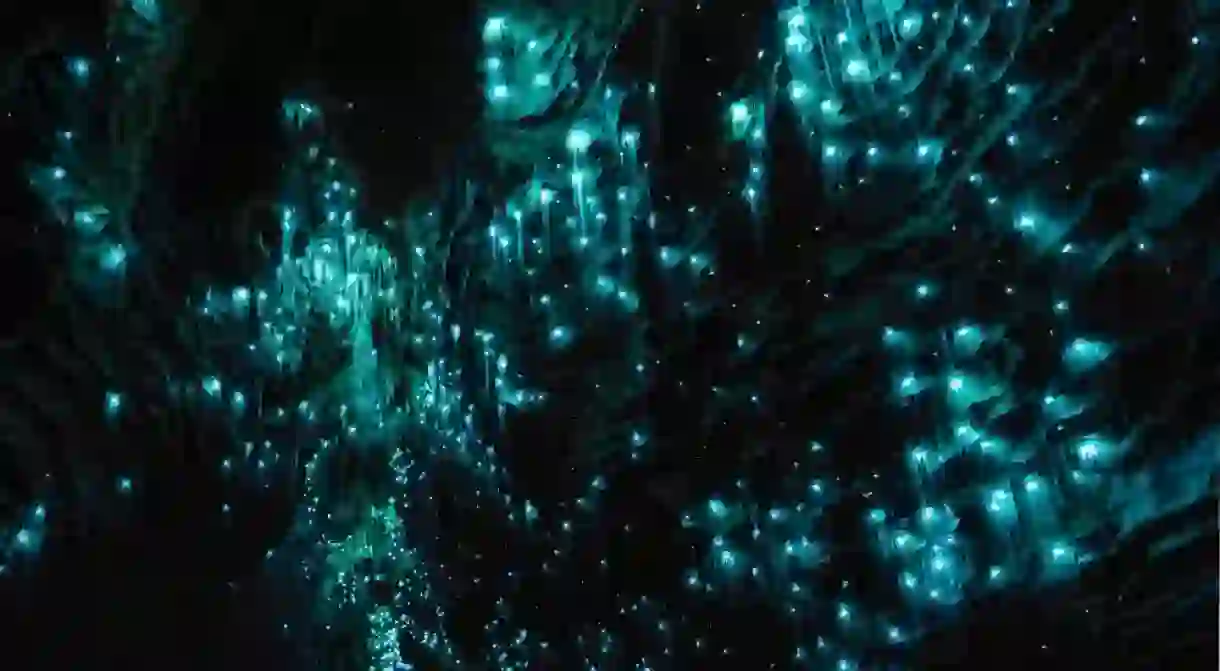These Are the 10 Most Spectacular Glow Worm Caves in the World

Glow worms, typically found in New Zealand and Australia, cover cave ceilings and undisturbed woodland areas where they hunt for prey using their alluring blue glow and a long thread of sticky web. As they fish for food, glow worms create an astonishing sea of starry lights. Below are the top 10 glow worm caves, forests, and grottos you don’t want to miss.
Waitomo Glowworm Cave, New Zealand
Natural Feature

Te Anau Glowworm Caves, New Zealand
Natural Feature
Dismals Canyon, Alabama, USA
Natural Feature

If America is more accessible than New Zealand or Australia, visit Alabama’s Dismals Canyon to see the North American Ofelia fultoni, nicknamed Dismalites, light up the darkened forest and caves with their blue-green glow. The glow worms are visible in the spring and summer on night-time tours through the Dismals Canyon. Like their cousins in the Pacific area, Dismalites use their blue-ish glow to attract food to their sticky webs while in their larvae stage.
Great Otway National Park, Australia
Park
Natural Bridge, Springbrook National Park, Australia
Natural Feature

Springbrook National Park is made up of four sections, visit the Natural Bridge section for the best glow worm views. Explore the area’s spectacular waterfalls by day, and by night look for the gorgeous blue lights speckling the rocky overhangs and ceilings. The humid temperatures and dense canopy make Springbrook a perfect habitat for the glowing insects, one of eight species of glow worm living in Australia. The best time to visit the Natural Bridge to see the glow worms is between December and March at night-time.
Hokitika Glow Worm Dell, New Zealand
Natural Feature

Enter a small sea of glowing lights on an evening walk in Hokitika’s Glow Worm Dell. This outdoor gathering of glow worms can be found here year-round. The entrance to the sign-posted walk is located across the street from the Shining Star Beachfront Accommodation and is only a walk of a minute or two from the road. Enjoy a moment of silence under the brilliant glowing canopy, this site is off the tourist trail, so it’s likely you won’t encounter large crowds. Just remember not to shine your lights on the insects.
Wellington Botanic Garden, Wellington, New Zealand
Architectural Landmark, Natural Feature

Visit this centrally located garden in the capital of New Zealand for a fantastic look at glow worms without leaving the comforts of the city. See the glow worms located on the overhanging banks of the hills from the paths in the Main Garden, from the Duck Pond up to Glen Road along the Pukatea Stream. The Botanic Garden is free to enter and houses an exquisite array of protected native forest and wildlife. The best time to see the glow worms is at night in the spring after it has rained. Check the events calendar to see if any guided tours are running.
Glowworm Tunnel Road, Australia
Historical Landmark, Natural Feature

This unique venue for glow worm watching is a disused, 400-meter-long railway tunnel on the Newnes Plateau in the Wollemi National Park. The train line, which formerly ran to Newnes Kerosene Shale Works, hasn’t been used since the 1940s. Today it lights up with the cool blue hue of thousands of glow worm larvae who have reclaimed the man-made structure as their own cave. Be sure to bring a flashlight and good walking shoes for the walk through the tunnel.
Tamborine Mountain Glow Worm Caves, Australia
Natural Feature
As Australia’s climate becomes hotter and drier and as humans destroy rainforest areas, glow worms are restricted to fewer and fewer areas on the continent. The glow worm cave at Mount Tamborine in the Gold Coast Hinterland was purpose-built to provide a homey atmosphere in which Australia’s glow worm population could thrive. The realistic cave is a controlled environment complete with stalagmites and stalactites, water features and flow stone. Daytime tours are offered for guests to learn more about these fantastic creatures.
Minnehaha Glow Worm Walk, New Zealand
Architectural Landmark, Natural Feature
Enjoy a 20-30 minute walk through lowland rainforest to the beautiful glow worm grotto of Fox Glacier. Throughout the walk along a trickling stream, visitors will be exposed to many types of forest trees, ferns and mosses before finding the stunning sight of the mystical glowing lights from up above. Minnehaha Walk is free of charge and is suitable for families and wheelchair access.













